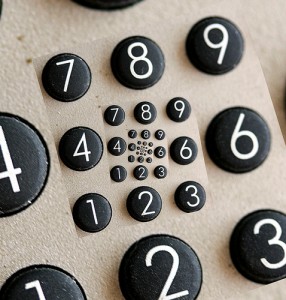Collaborating by Numbers
April 6, 2011 Leave a commentWhile designing a board retreat with a client a number of weeks ago, I got some push-back when I suggested that we break into smaller groups at a certain point in the agenda. “That seems a bit contrived,” was the comment. I responded that having a group of more than 15 people discuss matters as a large group for several hours was not going to be an enjoyable or productive experience for everyone. “Plus,” I added, “people will get a chance to know one another better.” My rationale was accepted, but how I wished I had a much more snappy and scientific response at that moment in time. I know intuitively when it makes sense to keep people together or break them up, and of course there are myriad options for organizing people. So what are some practical guidelines for choosing how to segment wholes?
Here are some thoughts, informed by personal experience, the mentoring of Robert Gass, and the numerical musings of J.G. Bennett:
- Monads (asking people to work individually) are helpful in affirming what each person brings to collective work, their autonomy, unique gifts, and agency. I have shared some of my thinking on when to focus on this kind of differentiation, versus integration, in groups in the post “Dimensions of Social Space.” Making space for individual work can also honor the introverted thinking process.
- Pairs/Dyads are great for creating intimacy, but may be too intimate if people do not know each other well. Pairing people up can be useful for sharing perceptions and reactions, and looking at apparently diametrically opposed aspects of some issues. Space can also be created in dyads for talking about difference without getting into degrees.
- Triads can bring more energy to discussing an issue while maintaining a fair amount of intimacy. I like to get people in large groups to introduce themselves initially in trios before getting into the larger group. Trios create the opportunity for bringing in the role of an observer (in a coaching exercise). A third person can also serve a bridging/mediating/reconciling function when that is necessary or desirable.
- Quads work well for generating even more energy around discussing an issue. There also seems to be a real creative edge in groups of four, which may be a reason it is the grouping of choice in World Cafes. Quads are sometimes used when speaking to the fundamental parts of a system (think the four elements, the four directions). At the same time, quads might lead to the creation of different sides that can get deadlocked, so may not the best for making decisions.
- Groups of five on the other hand are good for engaging in decision-making and problem-solving work. Pentads create the opportunity for greater role differentiation (leader, facilitator, recorder) and are of a size that is less conducive when the goal is personal reaction and involvement.
- Six and more . . . more may or may not make merrier, and will likely require stronger facilitation skills. There’s a rule in small group ministry that once you grow beyond 8, it is best to start another small group.
Wondering what your own rationale and experience has been in segmenting and organizing people to do collaborative work.

No Comments
Very helpful tips Curtis, they resonate for me. One cool bit I heard is that groups under 7 can self-facilitate, if you look at dinner conversations, it naturally splits into at least two groups (not necessarily the same size) once you add an 8th person. It is good to see what we do organically.